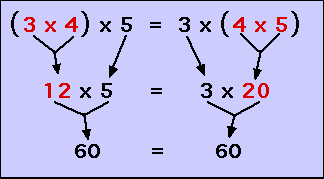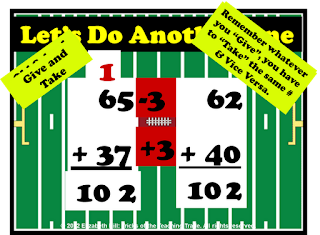Wow! We have come along way from when we were growing up and learning how to add. When we were learning facts, we were just told to memorize. You didn't need to know why 4 + 3=7. All you needed to know was that it was 7! You just learned your facts.
Then when we moved to adding 2 and 3 digit numbers, all we knew was that we stacked up the numbers and remembered those facts. If there was a number bigger than 9 in a position, we "carried" the other number to the next place. No one explained why. No one told us that the 1 in 12 was really 10 ones that could be regrouped into 1 ten and then that is why it was moved to the tens place.
Now we not only teach kids this but we expect them to be able to convey it on state and national tests. We no longer want to know that 53 + 29 is 82. We want to know "how did you find that answer", or "what method did you use to solve your problem", or "how did you use mental math to help you".
In other words, students must be able to show the "how" and the "why" and not just the "what". The problem is that anyone who has been teaching more than five years never learned how to teaach like this. All we know is the "old school" algorithm.
Through out my thirteen years of teaching, I have been criticised for teaching students using unconventional methods, especially when it comes to addition, subtraction, multiplication, and division. Teachers have told me that kids have to know how to do it the traditional way! Why? Does it say it in a standard somewhere? Oh, it is in the book? Well, guess what...math books are becoming obsolete...so you might want to stop resting on your laurels and the way we have always done it and spread your wings a little bit.
I have created 2 different PowerPoint presentations on
Addition With Regrouping and
Addition Without Regrouping. These presentation include many different strategies for adding numbers, like drawing the problem out, expanded form, branching, a method called Give and Take, and even...Old School. You can see my
I have also created a packet entitled
Autumn Addition that includes lessons on each method of addition without regrouping. It includes printables, rules, games, and more!
Finally, I have created a unit for teaching addition without regrouping entitled
Game On:Addition with Regrouping. It includes lessons on each of the methods of branching, drawing, expanded form, give and take and old school. It has printables, activities, games, and songs to make learning about the "how" and "why" of addition with regrouping engaging and fun!

















































